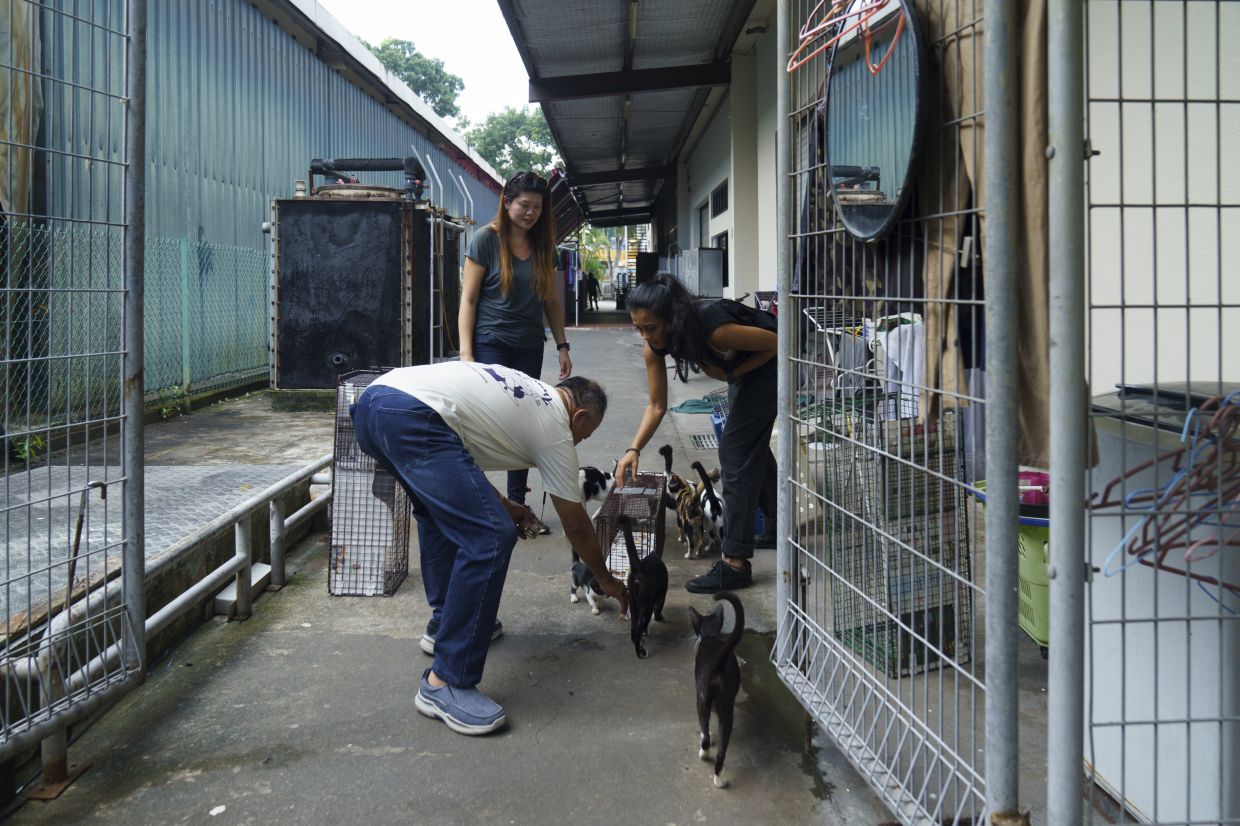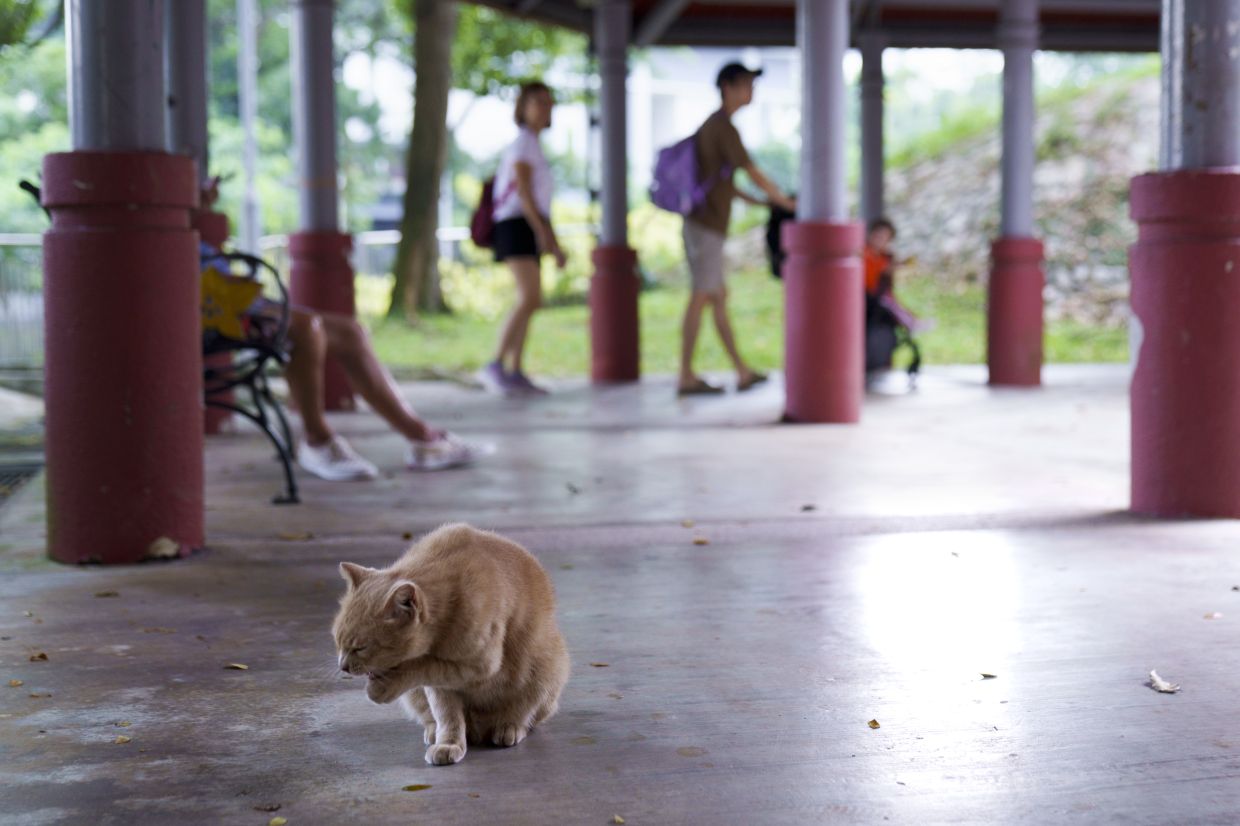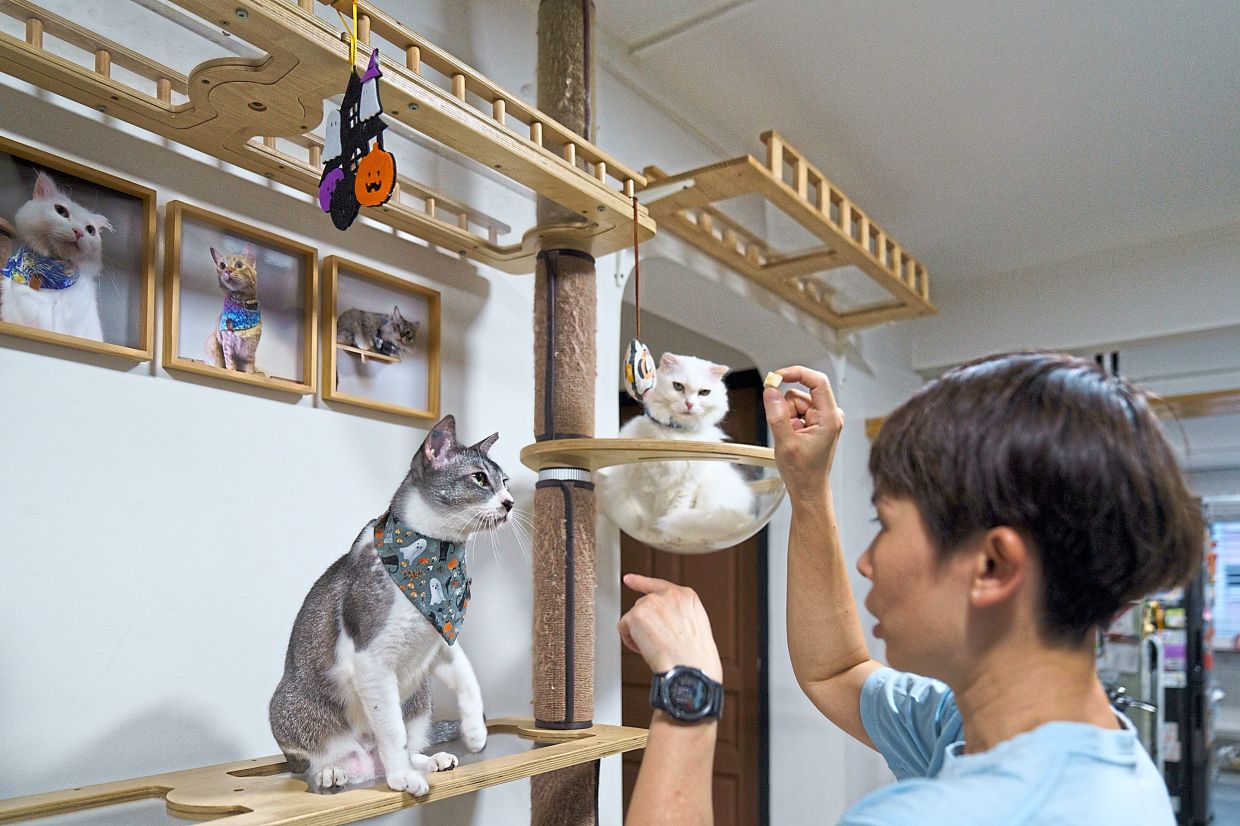Cats in cages after a trapping mission at an industrial complex in Singapore. — ©2024 The New York Times Company
XINDERELLA the foster cat has a microchip, a human guardian and a stable home, but she lives in a state of regulatory limbo. Under murky new rules governing cats in Singapore’s public housing, she is not registered to the apartment where she sleeps.
The plucky, three-legged tabby is one of an unknown number of cats that recently became legal to keep as pets in Singapore, where more than four in five residents live in public housing.
Uh-oh! Daily quota reached.

Kitty city
In orderly and efficient Singapore, where more than four in five residents live in public housing, the reversal this year of a 35-year ban on cats in those residences was a big deal for cat people, but many are also looking for clarifications of the new rules. — Photos: ©2024 The New York Times Company
Volunteers on a cat-trapping mission at an industrial complex in Singapore.
A student entices a community cat with a treat in Singapore, where the government estimates that there are about 13,000 'freeroaming' cats in public ground-level areas, especially at the HDB flats.













